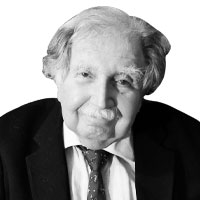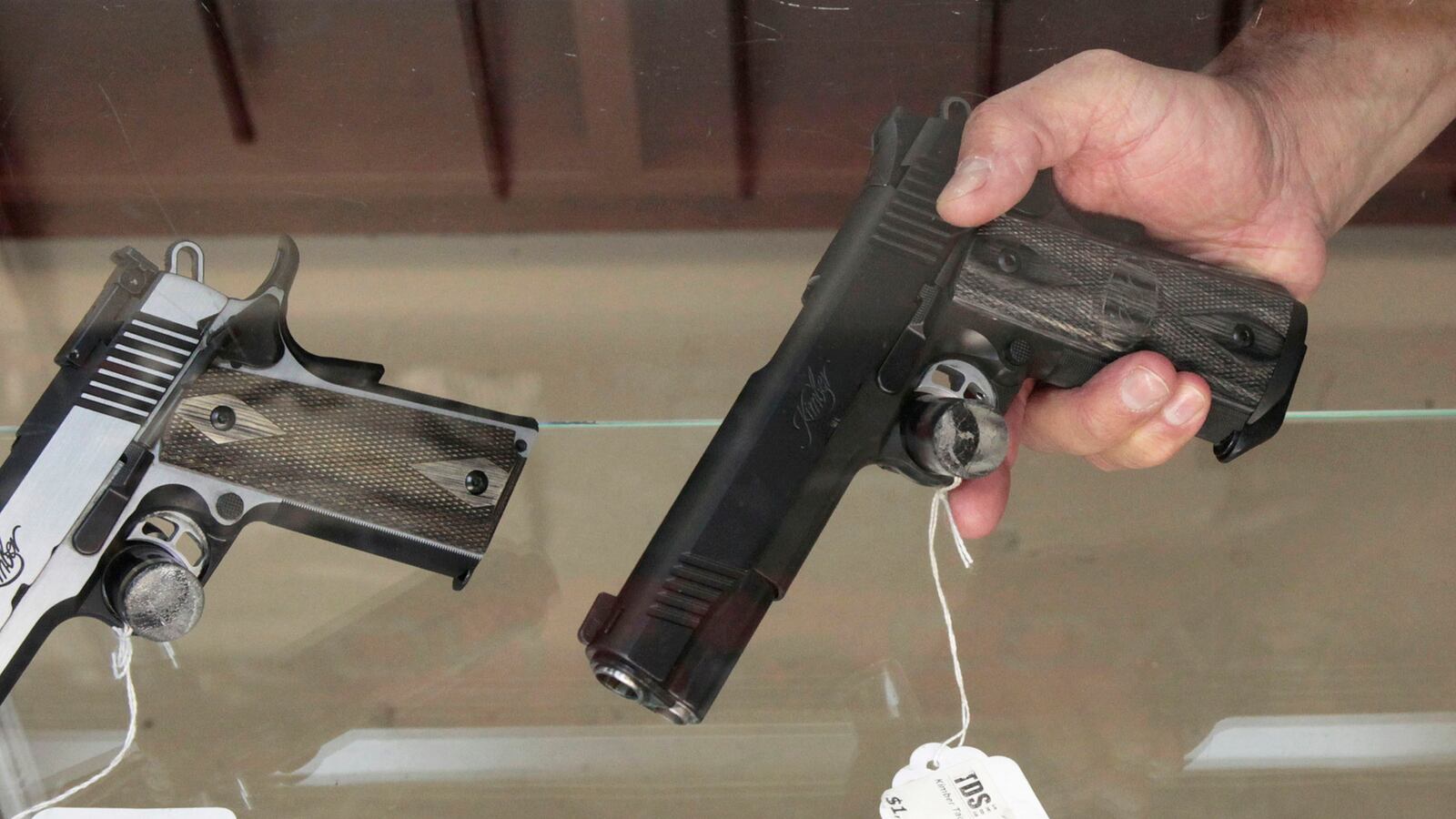One of the more execrable responses to the mass slaughter of 28 children and teachers in Newtown, Conn., by a crazed gunman, has been the idea that we’d be safer if we were better armed—that a kindergarten teacher with a handgun would somehow be a match for a determined assailant with automatic weaponry intended for warfare. The general mayhem that might be inflicted on innocent bystanders in the ensuing shootout goes unmentioned in these fantasies.

Leaving aside such helpful remedies as former GOP presidential hopeful Mike Huckabee’s suggestion that the shooting filled the vacuum that was left when prayer left our schools, the larger issue for gun advocates is one of our liberties. For them, the right to bear arms trumps any attempt to dilute the Constitution’s Second Amendment with restrictions on who bears arms, for what purpose, and exactly what sort of arms they’re bearing. Any attempt to encroach on it, even by an iota, will ultimately lead to our enslavement by a federal tyranny. If we have to suffer an occasional mass murder, it is a necessary price we must endure to insure our freedom.
But what does the Second Amendment actually say? Here it is, in full: “A well-regulated Militia, being necessary to the security of a free State, the right of the people to keep and bear Arms, shall not be infringed.”
By lopping off the first half of the sentence, the pro-gun lobby and its apologists have eliminated the Founders’ rationale for this amendment: That those who bore arms did so as members of a well-regulated militia. This was never a license for freelance vigilantism.
Just months before the Constitution was forged, our new nation endured Shays’ Rebellion of 1786-7, in which a militia had to be called out in Massachusetts to suppress an uprising against the government’s fiscal policies before order was restored. The purpose of the Second Amendment was to subdue violent dissent, not enhance it. At the time, we hardly had an army to speak of, so the safest way to ensure the security of the federal and state governments against subversion was “a well-regulated militia.” It derives from Article One of the Constitution, which gives Congress the power “To provide for calling forth the Militia to execute the Laws of the Union, suppress Insurrections and repel Invasions.” The Second Amendment says nothing about administering personal justice or taking the law into one’s own hands.
One of the ironies of its deification by the current Supreme Court is that Justice Antonin Scalia, a self-styled “originalist,” has ignored the historical context and the clear intent of the Founders in providing legalistic cover for the gun lobby.
There is, however, one sort of militia that benefits from the arsenal of heavy weaponry available to all comers. It is the paramilitary groups that practice secretly for a final reckoning with the federal government in the name of a “liberty” known only to them. Who else would need such an arsenal? Yet it is these very anarchic groups that the Second Amendment was incorporated to subdue.
Since the Bill of Rights was written, we now have a powerful Army to defend us from invasion and a National Guard to maintain internal security. We no longer need a militia—except in the paranoid fantasies of the paramilitary. In this case, patriotism is indeed the last refuge of a scoundrel and the scoundrels are the faux Minutemen with their mistrust of, and disdain for, democratic government, together with their enablers in the gun lobby, who make a fat profit off of other people’s misery behind their cynical invocation of “rights.”
The gun lobby, in its triumphalist success, has refused to give an inch in invoking these “rights.” But where would our liberties be infringed if we resumed the assault-weapons ban that ended in 2004? Were we any less free during its tenure? There is plenty of room in gun-control reform to allow hunters their rifles, to let people with valid permits keep a handgun in their homes, or to allow gun fanciers to add to their collection. None of these involve loading up guns that can shoot off 50 or a 100 rounds a minute. There is no reasonable purpose for civilians to be walking around with such weaponry—much less on school grounds, at airports, and in bars—as gun-advocate hard-liners now insist on as an article of faith.
These weapons belong in the hands of the military and law-enforcement officers who are trained to use them. Reformers seek not to ban guns but to put reasonable limits on their most egregious use.
Gun-control critics maintain that since mass shootings are rare occurrences, reform is unnecessary. This is like arguing that since plane crashes are rare, we don’t need air safety. When cornered, they trot out the shopworn anthem of the National Rifle Association: “Guns don’t kill people. People kill people.” True, but people with automatic weapons can kill many more of them.
Will tighter gun control laws prevent the kind of mayhem that we have recently suffered in movie theaters, malls, temples, coffee bars, universities and public schools? To be sure, it is difficult to prove a negative. But it stands to reason that by making it more difficult for assault weapons to fall into the hands of dangerous, demented people, we are at least limiting the possibility of another Newtown school massacre. It is not much to give up, and it is a sacrifice worth making. Ask the parents of the 20 children at the Sandy Hook School.






